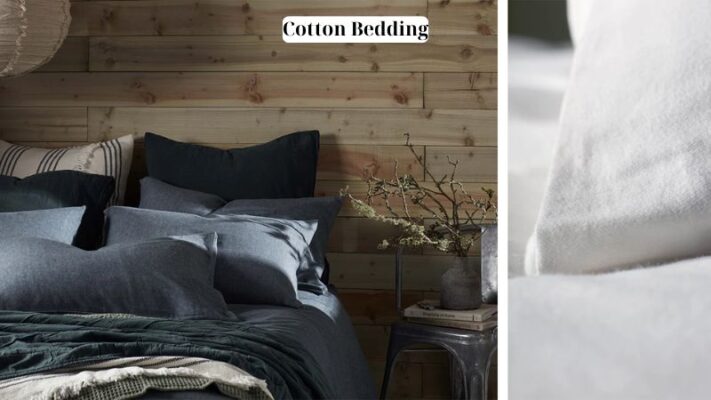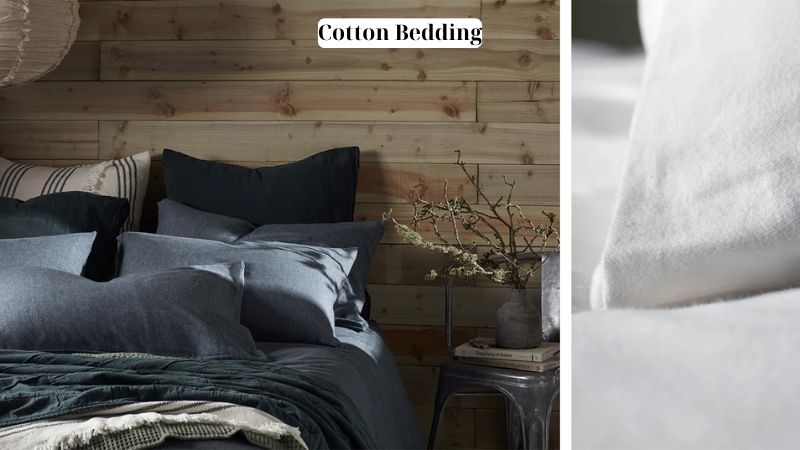Blog
High-Quality Silk and Cotton Bedding: Elevate Your Sleep Experience
High-quality bedding plays a key role in achieving a restful night’s sleep, and silk and cotton are two of the most popular materials for luxury bedding. Known for their comfort, durability, and breathability, both silk and cotton bedding deliver unique benefits. Goldtopis.xyz explains the characteristics and benefits of each material, compares them, and offers tips for selecting the best high-quality cotton bedding that suits your needs.
Characteristics and Benefits of Silk Bedding
Silk bedding is renowned for its luxurious feel and elegant look. Made from the fibers produced by silkworms, silk is soft, smooth, and naturally hypoallergenic. This premium fabric has a glossy appearance and is exceptionally gentle on the skin, which makes it ideal for sensitive skin or those looking to prevent wrinkles.
- Comfort and Feel: Silk has an incredibly smooth texture that glides over the skin, offering a soft, delicate feel. Unlike other fabrics that may cause friction, silk reduces irritation and is gentle on the skin, which benefits hair and skin health.
- Temperature Regulation: Silk is naturally breathable and moisture-wicking, making it suitable for use in all seasons. It keeps you cool in summer by wicking away moisture and warm in winter by retaining body heat, creating a comfortable sleep environment regardless of the season.
- Hypoallergenic Properties: Silk bedding is naturally resistant to dust mites, mold, and allergens, making it a great choice for individuals with allergies. Its hypoallergenic quality also helps reduce irritation for those with respiratory issues.
- Durability and Maintenance: While silk requires special care, high-quality silk is surprisingly durable. Hand washing or using a gentle cycle and air drying keeps silk bedding looking fresh and extends its lifespan. Avoiding harsh detergents is essential, as these can weaken silk fibers.
Characteristics and Benefits of Cotton Bedding
Cotton is a versatile and popular bedding material. Known for its breathability, softness, and ease of care, cotton bedding is ideal for daily use. Egyptian and Supima cotton, two of the highest-quality types, are especially valued for their long, strong fibers and soft texture.
- Breathability and Comfort: Cotton’s breathability is one of its greatest assets. It allows airflow, wicks moisture, and keeps you cool during warm nights, making it an ideal choice for people who tend to sleep hot. Cotton’s softness varies based on thread count and weave, with high-thread-count cotton feeling especially luxurious.
- Hypoallergenic Nature: Like silk, cotton is also naturally hypoallergenic, creating a healthier sleeping environment. High-quality cotton, especially organic varieties, is grown without harsh chemicals, which may further reduce the risk of allergies.
- Durability and Easy Maintenance: Cotton bedding can withstand frequent washing, and it softens over time, making it a practical and durable option. Cotton is also easy to care for—most cotton bedding is machine-washable and can be tumble-dried on low heat. However, avoid overusing fabric softeners, as they may coat cotton fibers and reduce breathability.
- Affordability and Variety: Cotton offers a wide range of options, from affordable blends to premium Egyptian cotton. Different weaves like percale, sateen, and flannel allow for a variety of textures and appearances, making it easy to find cotton bedding that suits your style and preferences.
Silk vs. Cotton Bedding: Key Differences

Both silk and cotton have unique qualities, but choosing between them comes down to personal preference and needs.
- Texture and Feel: Silk’s smooth, slippery feel is often associated with luxury and elegance, whereas cotton offers a more textured feel that varies depending on the weave and thread count. Percale cotton provides a crisp, cool feel, while sateen has a silky finish similar to silk.
- Temperature Control: Silk’s natural insulation adjusts to body temperature, providing warmth in colder months and cooling effects in warmer weather. Cotton is extremely breathable, allowing air circulation, which helps keep you comfortable year-round, especially in hot climates.
- Ease of Care: Cotton is generally easier to care for than silk. Cotton bedding is machine-washable and can be tumble-dried, whereas silk requires gentler handling, with hand washing or delicate machine cycles, and should be air-dried to maintain its structure.
- Durability and Investment: Both materials are long-lasting when well cared for, but cotton is generally more affordable and widely available. Silk bedding is more of an investment, but the luxury and beauty it brings may be well worth the cost for those who value an opulent sleep environment.
Choosing High-Quality Silk and Cotton Bedding
Investing in high-quality bedding means understanding the factors that contribute to comfort, longevity, and overall value. Here are tips to help you make the best choice:
- Thread Count and Quality: For cotton bedding, a thread count between 200 and 800 typically indicates good quality, though thread count alone isn’t the only factor. Cotton types like Egyptian and Supima are known for their quality, as they are made from long-staple fibers that are softer and more durable. For silk, quality is measured by momme weight; 16-25 momme is considered ideal for silk bedding, offering both durability and softness.
- Weave Type: Different weaves create distinct feels and appearances. Percale is crisp and cool, sateen is soft with a silky finish, and flannel is warm and cozy for winter use. Silk is generally woven in a charmeuse style, which has a smooth, glossy finish, further enhancing its luxurious look and feel.
- Color and Aesthetics: Silk often has a natural sheen that adds elegance, while cotton is available in various colors and patterns, making it more versatile for different decor styles. Opt for neutral tones for a classic look or bold colors for a statement piece. High-quality bedding retains color well and resists fading over time.
- Certifications and Safety: Look for certifications like OEKO-TEX® or GOTS (for organic cotton) to ensure that the bedding is free from harmful chemicals. These certifications provide peace of mind, especially for those with sensitive skin or allergies.
- Price and Warranty: High-quality silk and cotton bedding can be a considerable investment. Compare prices across brands and check for warranties or satisfaction guarantees, which can offer assurance of the bedding’s durability and comfort.
Conclusion
Whether you choose silk or cotton, investing in high-quality bedding transforms your sleep experience. Silk offers a lavish feel and temperature-regulating properties, ideal for those seeking a luxurious, hypoallergenic option. Cotton bedding is practical, breathable, and versatile, making it a favorite for all seasons and easy to maintain.


